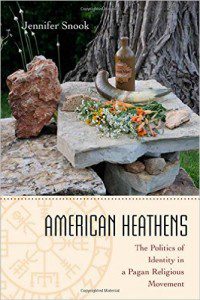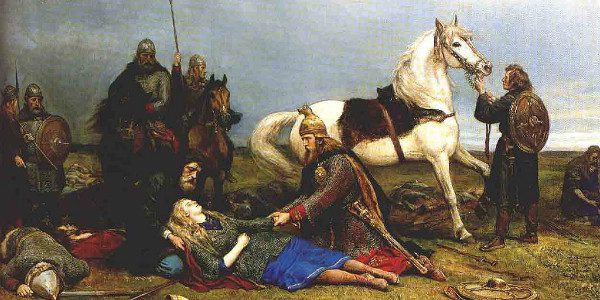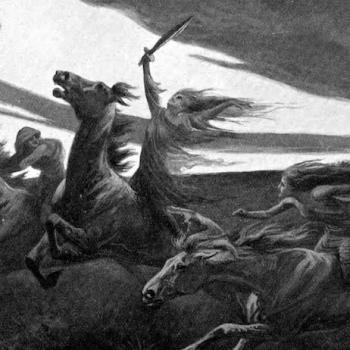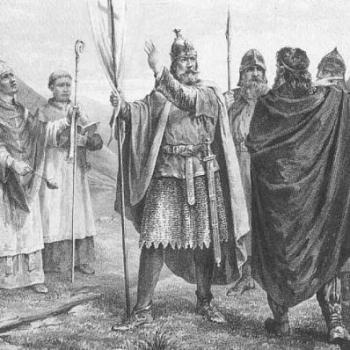Be a stumbler. There is virtue in that.
 About ten years ago, I commuted to my job on the train up to Oakland. This gave me about two hours a day in which I probably could have worked on my laptop or read a book. Mostly, it gave me about two hours a day to get some more sleep, but not very good sleep, lest I wake up at the far end of the line and late for work. It also made me the passive receptor of a lot of coughs and sneezes and conversations that were probably intended to be private.
About ten years ago, I commuted to my job on the train up to Oakland. This gave me about two hours a day in which I probably could have worked on my laptop or read a book. Mostly, it gave me about two hours a day to get some more sleep, but not very good sleep, lest I wake up at the far end of the line and late for work. It also made me the passive receptor of a lot of coughs and sneezes and conversations that were probably intended to be private.
One such conversation stood out during those several years. I had left work early, and the train was nearly empty at that time of day. Sitting on the other side of the car were two old black men, and I got the impression they had not met before. They sat not close to each other, but near enough to hear each other over the clack and howl of the rails. Their discourse was like nothing I had heard before or since. The words were easy enough to understand, but what they were supposed to mean was beyond me. There was no information in them that I could discern.
This went on for about ten minutes. It was not what one would call an animated discussion. The words were few, and the pauses long. Both men had wry smiles on their faces as their elliptical messages went back and forth. There was an occasional laugh, where I could not remember anything funny being said. I remember thinking “What are they doing? And why are they doing it?”
Years later, I still cannot give firm answers to those questions, but I have a guess. I think they were confirming to each other that they understood each other, and could understand and trust each other, in ways that others could not. These men were unusual to me. Between themselves, they were ordinary, and were willing to put a lot of time into nothing more than letting each other know that.
We humans do a lot to convey to other humans that they can trust us. Sometimes, we do a lot to convey to others that they should not. Most of the Trust dataflow is more subtle than credit checks or pat-downs or body cavity searches. How we dress, how we walk, what we talk about, the little jokes we tell each other, when we do and don’t look each other in the eye, these and more are the clues we emit, saying “I am like you. I trust you. You can trust me. So let’s get together.”
Within Heathenry, we talk a lot about Inangardh and Utgardh, inside and outside, who is behind our literal or figurative shield wall, and who is on the other side of it. There are lots of opinions on what that means and how one conveys or perceives it. Jennifer Snook, Ph.D, Professor of Sociology, AKA Skadi, decided to have more than an opinion. She asked a lot of questions of a lot of Heathens over a lot of years, and counted up the answers.

This is not a case of a mole burrowing into our community to ask questions we would not have answered to an outsider. Nor is it a case of someone entering a community under false pretenses and then “going native”. In this project, she is not one to collect data and then lack the concepts to understand what she has found: no one here will insist at the end that we must really be devil worshippers. Snook is a Heathen. She is one of us, and has been since before she began her quest.
Her book, American Heathens (ISBN 1439910979, available from Amazon), is the first long-term sociological study of what it means to be Heathen in America. It is an interesting work.
Not to say that it is an easy read. Dr. Snook often writes the high-viscosity code of the professional Soft Sciences. Figuring out what some of that means may or may not be worth your time. In other places, she is quite clear about things you may or may not have thought much about. You will have your opinion, and she will have hers, and they may or may not be the same. What she has on her side, however, is the unarguable work and analysis she has done. That is worth something.
Can one understand a religion with a spreadsheet? Similarly, can one understand myths through technical literary analysis? No, but these things are still valuable and worth doing. Often enough, what everyone knows must surely be true turns out to be false when someone really goes to look. Are the ideas various Heathens describe as necessary really eigenvectors of the faith? Or are they arrows pointing nowhere, like the portrayal of Oz in the movie: impressive, memorable, fearsome even, but without substance or connection to how anything really works?
Snook went out of her way to be fair. For example, I appear in her book, and she sent me and others their relevant portions before publication, so we could talk about and clear up any misunderstandings she might have had. She did have some, and I didn’t get around to answering her at the time. Busy life and all, you know. If I had, it probably would have changed a few sentences in the result. No, I will not tell you which, but I have since told her, not that it will help at this point. Any fault here is mine, not hers.
She applies to herself several liberal-oriented labels that annoy some people, including myself sometimes. And she has repeated elsewhere the usual post-modernist mantras: objectivity is impossible, and politics pervades all. As a corollary to this, she sometimes seems to simply replace one set of questionable judgments (perhaps yours) with another (perhaps hers) and then calls it Science. Like a lot of Hard Science people, I am not sure that is what it is. But it is interesting, and probably useful, too: like technical literary analysis. Remember to be a critical reader (not the same as wrong-seeking, but questioning the questioner). For those who seek Right, it is rarely found in a flash, but by stumbling through a series of murky Wrongs that eventually come to Right. Or at least More Right. Be a stumbler. There is virtue in that.
The Snook book will kick over the stones of your hearth to see what is under there. You may then put them back, if you like. For most of them, you probably will. For a few, you might decide to clean them off and set them back at a slightly different angle. You might find yourself looking at your Inangardh and Utgardh at a different angle, too. Since we are Heathens, whether Dr. Snook approves of your decisions is not anything that needs to concern you. That you chose to examine your hearthstones again through her work would undoubtedly be gratifying to her.
I want you to read this book.

















